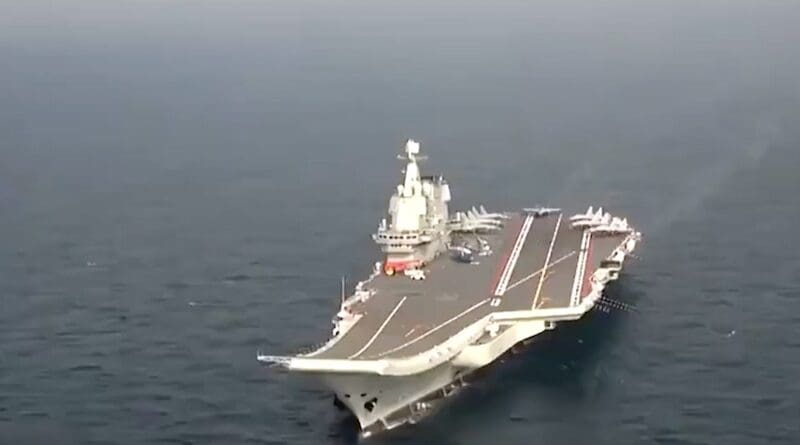Chinese Aircraft Carrier Shandong Sails Near Philippines
By RFA
A Chinese aircraft carrier sailed near the main Philippine island of Luzon late last week in what one analyst said was a show of China’s resolve amid tensions with Manila in the South China Sea.
Satellite images obtained by MizarVision, a technology firm based in Shanghai, and several open source analysts show that the Shandong was spotted in the waters about 200 nautical miles (370 km) from Luzon, which is the extent of the Philippines’ exclusive economic zone, since last Wednesday.
The carrier appeared to be nearest to the Philippine mainland on Friday before heading northwest. This would be the first time a Chinese aircraft carrier has come that close to Philippine shores.
On Sunday, it appeared to be back in the waters near Hainan, China, some 150 km (93 miles) southeast of Sanya.
The South China Morning Post newspaper quoted Ni Lexiong, defense professor at Shanghai University of Political Science and Law, as saying that the carrier’s passage was intended to send a message of deterrence to Manila and Washington and underline “China’s determination to protect territorial sea sovereignty” amid tension over the Second Thomas Shoal.
Last month saw escalating confrontations between the Chinese and Philippine coast guards near the shoal, where Manila maintains an outpost on an old warship. On June 17, Chinese coast guard personnel rammed and boarded a Philippine boat, severely injuring a Filipino sailor.
The Philippines has not confirmed the sighting of the Shandong.
Named after the Chinese province of Shandong, it is China’s second aircraft carrier but its first that was domestically built.
While sending a message of deterrence, China’s aircraft carrier fleet, though expanding, still lags far behind that of the U.S. in terms of technology and power projection.
The Shandong was commissioned in 2019, seven years after the first aircraft carrier, the Liaoning, joined the navy’s fleet. Both carriers use a ski jump-style launch system called STOBAR, considered much less advanced than U.S. carriers which use electromagnetic catapults.
The Shandong cannot accommodate J-35s, China’s fifth-generation fighters, as they require catapults for take-off.
Show of force
Ni, the Shanghai-based professor, was quoted in the Hong Kong newspaper as saying that the Chinese carrier’s deployment might also be a response to the U.S.-led Rim of the Pacific exercise, which started on Thursday.
The exercise, widely known as RIMPAC, is held every two years and is in its 29th iteration this year.
The U.S. and 28 partner countries have sent 40 surface ships, three submarines, 14 national land forces, more than 150 aircraft and 25,000 personnel to take part in the drills that are expected to last until Aug. 1 in and around Hawaii.
U.S. Nimitz-class nuclear-powered supercarrier the Carl Vinson arrived in Pearl Harbor on June 25 to participate in RIMPAC 2024.
The U.S, Navy said in a statement that the exercise this year would include “multi-domain warfare in a range of scenarios from anti-submarine warfare, multi-ship surface warfare, multinational amphibious landings, and multi-axis defense of the carrier strike group against live forces.”
U.S. military newspaper Stars and Stripes reported that one of the drills will be the sinking of a decommissioned amphibious assault ship – the USS Tarawa – as a target.
At 40,000 tons, the ship is roughly the same size as China’s new Type 075 amphibious assault ships that it is believed to have developed in case of conflict in the Taiwan Strait and the South China Sea.
Military analyst Fu Qianshao told China’s Global Times newspaper that using an amphibious assault ship of similar size as a target could simulate an attack on a Chinese amphibious assault ship, as well as on an aircraft carrier.
When asked about RIMPAC 2024, Chinese defense ministry spokesperson Wu Qian said, “The U.S. is trying to frighten the Chinese military through the so-called military exercise, which is a completely impossible task.

